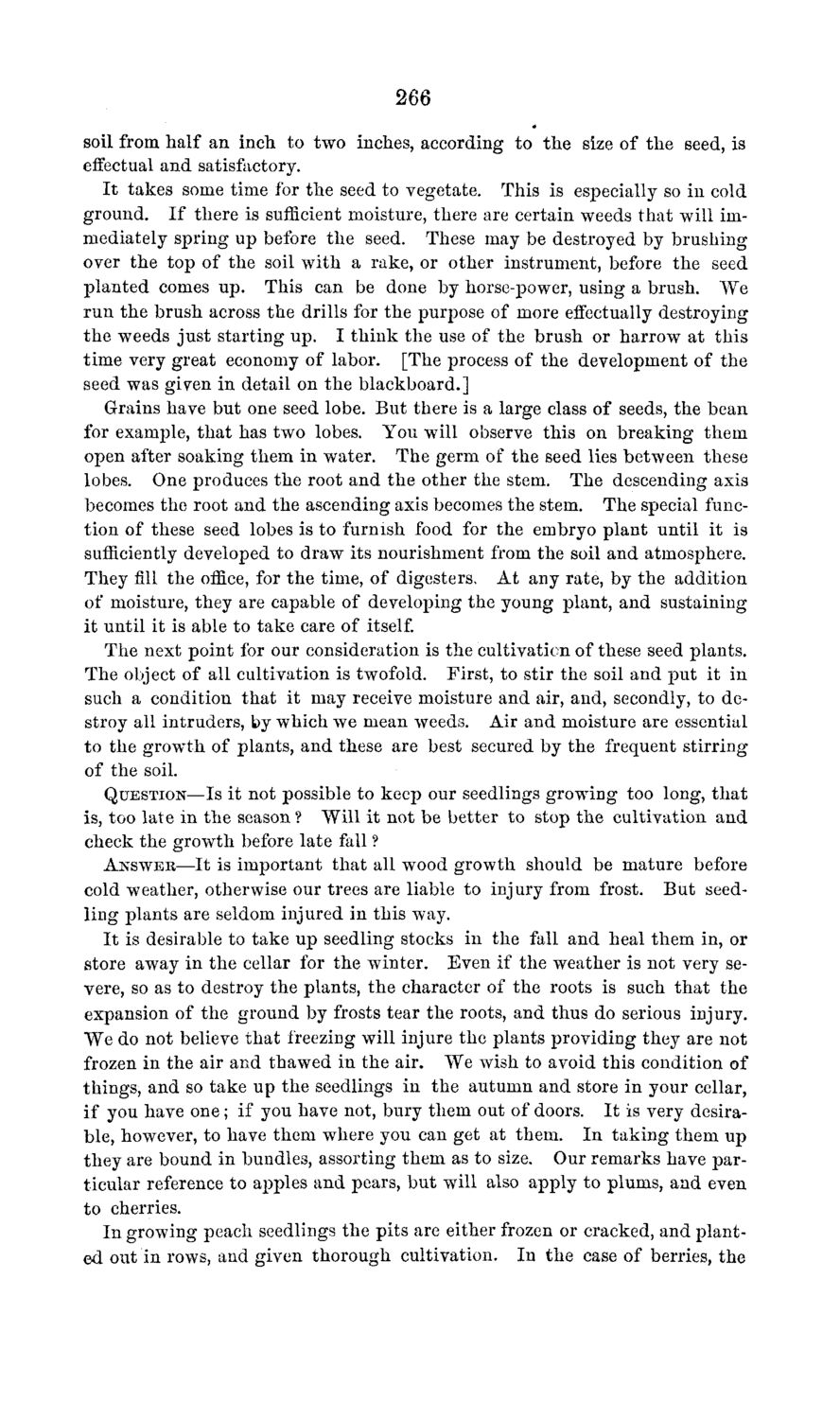| |
| |
Caption: Board of Trustees Minutes - 1869
This is a reduced-resolution page image for fast online browsing.

EXTRACTED TEXT FROM PAGE:
266 soil from half an inch to two inches, according to t h e size of the seed, is effectual and satisfactory. It takes some time for the seed to vegetate. This is especially so in cold ground. If there is sufficient moisture, there are certain weeds that will immediately spring up before the seed. These may be destroyed by brushing over the top of the soil with a rake, or other instrument, before the seed planted comes up. This can be done by horse-power, using a brush. We r u n the brush across the drills for the purpose of more effectually destroying the weeds just starting up. I t h i n k the use of the brush or harrow at this time very great economy of labor. [The process of the development of the seed was given in detail on the blackboard.] Grains have but one seed lobe. But there is a large class of seeds, the bean for example, that has two lobes. You will observe this on breaking them open after soaking them in water. The germ of the seed lies between these lobes. One produces the root and the other the stem. The descending axis becomes the root and the ascending axis becomes the stem. The special function of these seed lobes is to furnish food for the embryo plant until it is sufficiently developed to draw its nourishment from the soil and atmosphere. They fill the office, for the time, of digesters, A t any rate, by the addition of moisture, they are capable of developing the young plant, and sustaining it until it is able to take care of itself. The next point for our consideration is the cultivation of these seed plants. The object of all cultivation is twofold. First, to stir the soil and put it in such a condition that it may receive moisture and air, and, secondly, to destroy all intruders, k>y which we mean weeds. Air and moisture are essential to the growth of plants, and these are best secured by the frequent stirring of the soil. QUESTION—Is it not possible to keep our seedlings growing too long, t h a t is, too late in the season ? Will it not be better to stop the cultivation and check the growth before late fall ? A N S W E R — I t is important that all wood growth should be mature before cold weather, otherwise our trees are liable to injury from frost. But seedling plants are seldom injured in this way. It is desirable to take up seedling stocks in the fall and heal them in, or store away in the cellar for the winter. Even if the weather is not very severe, so as to destroy the plants, the character of the roots is such that the expansion of the ground by frosts tear the roots, and thus do serious injury. We do not believe t h a t freezing will injure the plants providing they are not frozen in the air and thawed in the air. We wish to avoid this condition of things, and so take up the seedlings in the autumn and store in your cellar, if you have one; if you have not, bury them out of doors. It is very desirable, however, to have them where you can get at them. I n t a k i n g them up they are bound in bundles, assorting them as to size. Our remarks have particular reference to apples and pears, b u t will also apply to plums, and even to cherries. In growing peach seedlings the pits are either frozen or cracked, and planted out in rows, and given thorough cultivation. In the case of berries, the
| |